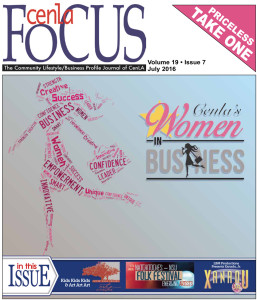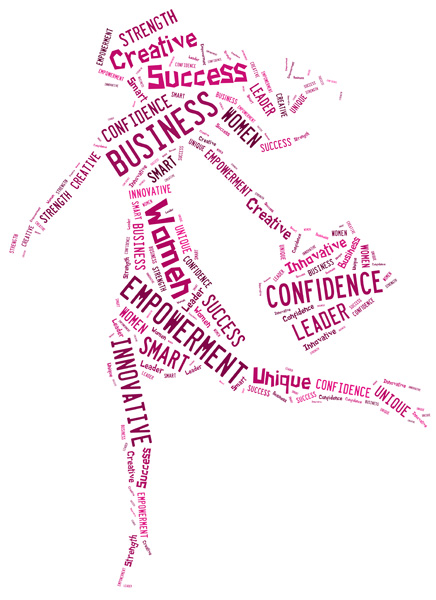
Women who are successfully closing the gender wage gap are doing so as a result of education, talent, career choices, and working as hard and as smart and as many hours as it takes. Some, like the welder mom, are choosing male dominated careers that are in high demand. Increasing numbers are forging success on their own terms as entrepreneurs, including Iviana Stewart, founder and owner of SolScapes, LLC and the Chamber’s Small Business Person of the Year for 2015.
The daughter of Cuban immigrants with roots in Miami, Florida, Iviana used her talent, business acumen and hard work, to build a successful, growing, multi-state business headquartered in Central Louisiana. On July 7th, Iviana Stewart and state and local officials announced an expansion of SolScapes, creating 40 new Louisiana jobs.
SolScapes’ growth strategies include market penetration, market expansion, service expansion, diversification and acquisition, effectively and efficiently providing a reliable and safe operation to assist the progress of utility companies in right-of-way tree and vegetation management services. This has been possible through two rounds of the Louisiana Economic Development (LED) Economic Gardening. SolScapes was nominated for LED’s Economic Gardening Initiative by Central LA Economic Development Alliance’s (CLEDA’s) Business Acceleration System. “The support that Iviana Stewart has received from CLEDA and LED, combined with her talent, intelligence and relentless hard work, has put Solscapes into a position to experience significant growth,” said Jim Clinton, President and CEO of CLEDA.
“This is my home now. I’m willing to do my part as a business owner to create more jobs and help people in my community and state,” said Stewart. “I moved here seven and a half years ago. I’m building a family and a business. I’ve received tremendous support, as well as benefits from LED and it’s time for SolScapes to give back to Louisiana.”
Paving the way for entrepreneurs like Iviana Stewart, were the pioneers of the women’s rights movement, particularly those who entered the workforce. Women like Elizabeth Blackwell, the first physician in the U.S., and Charlotte E. Ray, the first African American woman to earn a law degree, and Anita Summers, the first economist hired by Standard Oil are just a few of the inspiring women who earned places on the list of firsts. Sheryl Sandburg writes about Anita Summers in her 2013 book titled, “Lean In,” revealing that when Summers accepted the job in 1941, her new boss said to her, “I am so glad to have you. I figure I am getting the same brains for less money.”
The last decades of the 20th Century brought considerable progress in women’s professional advancement in the United States. The gender wage gap narrowed, sex segregation in most professions greatly declined, and the percentage of women climbing the management ranks steadily rose. But the rapid rate of change of the 1970’s and 1980’s began to slow in the 1990’s and 2000’s. The gender wage gap stalled and the percentage of women in management jobs stagnated.
Nationally, the median annual pay for a woman who holds a full-time, year round job is $39,621 while the median annual pay for a man who holds a full time job is $50,383. This means that women in the United States are paid 78 cents for every dollar paid to men, amounting to a wage gap of about $10,762.
The wage gap is larger for women of color. For example, African American women are paid, an average 60 cents, and Latinas are paid just 55 cents, for every dollar white men are paid. The disparity between women of color and men of color is less due to the lower wages earned by men of color.

Governor Edwards issued a written statement after the vote. “The failure of the House Labor Committee to pass the Equal Pay Act today is a true disservice to the women of our state,” wrote the Governor. “Actions speak louder than words, and the time has come to stop talking about family values and start making decisions that actually value families.”
The National Partnership for Women and Families quantifies the gender pay inequity on its Wage Gap Fact Sheet. On average, women employed full time in the United States lose a combined total of nearly $500 billion every year due to the wage gap. Women are primary or sole breadwinners for 40 percent of American families. If the annual wage gap were eliminated, on average, a working woman in the United States would have enough money for approximately:
- 83 more weeks of food for her family (1.6 years-worth)
- Seven more months of mortgage and utilities payments; or
- 11 more months of rent
Education statistics would lead one to believe the wage and leadership gaps between men and women should not be as pronounced. Women make up a slight majority of the U.S. population, at 50.8 percent. They are 47 percent of the workforce and 59 percent of the college-educated, entry-level workforce.
- They earn almost 60 percent of the undergraduate degrees and 60 percent of all master’s degrees awarded in the U.S.
- They earn 47 percent of all law degrees and 48 percent of all medical degrees,
- Women earn 44 percent of the master’s degrees in business and management, including 37 percent of the MBA’s.
And yet, although they hold almost 52 percent of all entry level jobs, American women lag substantially behind men when it comes to their pay and in representation in leadership positions.
- Women are only 14.5 percent of executive officers, 8.1 percent of top earners, and 4.6 percent of Fortune 500 CEO’s.
- They hold just under 17 percent of Fortune 500 board seats, a figure that has not budged in eight years.
- Female presence in top management positions today remains below 9 percent.
- The percentage of women on all U.S. corporate boards has been stuck in the 12.1 to 12.3 percent range over the past decade.
Although women control 80 percent of consumer spending in the United States, they are only 3 percent of creative directors in advertising. Their image onscreen is still created overwhelmingly by men. Women accounted for just 16 percent of all the directors, executive producers, writers, cinematographers and editors who work on top-grossing domestic films and were just 28 percent of all off-screen talent on broadcast television programs in the 2013-14 season.
The National Partnership for Women and Families addresses familiar, dismissive justifications for the gender wage gap such as women taking time off to give birth or making career choices in fields with lower wages such as teaching in greater numbers. Discrimination and bias still contribute to the wage gap, according to the research. Statistical analysis shows that 62 percent of the wage gap can be attributed to occupational and industry differences; differences in experience and education; and factors such as race, region and unionization. That leaves 38 percent of the gap unaccounted for, leading researchers to conclude that factors such as discrimination and bias continue to affect women’s wages.
An important point in the discussion about the gender gap is to compare women in the United States to those in other countries. So how does the U.S. measure up? Not so badly in the private sector. The U.S. is number six in women’s economic participation and opportunity on the World Economic Forum’s 2014 Gender Gap Index of 136 countries. But in the public sector—and in our percentage of female legislators in particular—we lag far behind many countries. The U.S. ranks 60th in women’s political empowerment on the Gender Index Gap. The world average for the percentage of women in national parliaments is 21 percent, slightly above the 18 percent in the U.S. House of Representatives. Finland, Iceland and Norway lead the way with over 40 percent.
Despite the current wage and leadership gaps, I am inspired everyday by women in Central Louisiana and throughout the state who are achieving success in the public, private and non-profit sectors. Women like Iviana Stewart; Sandra McQuain, the Senior Vice President of Operations at Baker Manufacturing; Christine Meshells, owner of JCM Greenhouse and CLEDA’s 2016 Entrepreneur of the Year at the Chamber’s Bizzy Awards; Katie Vanderlick, Executive Director of the YWCA, providing life altering services for women and girls; Lisa Campo whose American National Insurance Company agency grew by over 300 percent last year; Angela Bracey, owner of Humble Home Academy, the first 24 hour daycare center in Alexandria; Mary Jon and Mary Carroll Converse, running Skip Converse General Contractors; and too many more to name are busy enhancing the local economy, providing vital products and services and building our community. They are pioneers for the next generation of women.

Deborah Randolph is the first female president of the Central Louisiana Regional Chamber of Commerce in its 102-year history.









